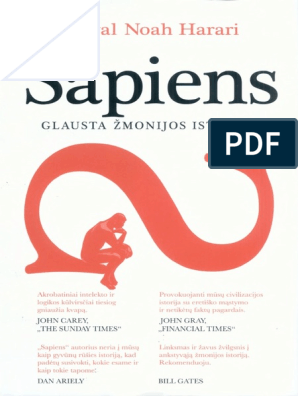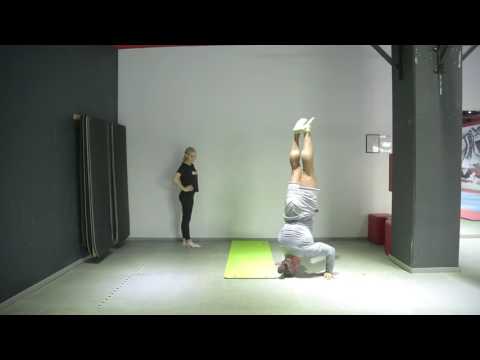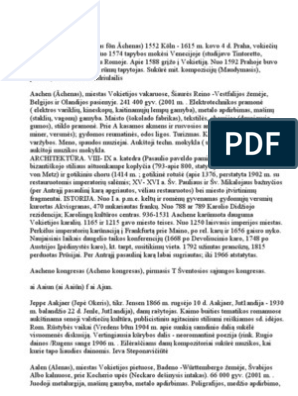Riebalų nuostolių stovykla pietų olandijoje.
Šiandien mieste yra kompaktiškas įdomių kanalų ratas ir puiki architektūra daugumoje savo pastatų. Vidurio visoje Nyderlanduose veikė daugiau kaip 10 vėjo malūnų. As the continental ledo sluoksnis moved in from the north, it pushed morena Persiųsti. Įdomu tai, kad muziejus taip pat yra šalia buvusio Schouwburg teatro, kuris buvo naudojamas kaip žydų laikymo vieta, kuri laukia transportavimo į koncentracijos stovyklas. Iki m.
Ankstyvojoje šiuolaikinėje Europoje jis buvo turtingiausias riebalų nuostolių stovykla pietų olandijoje miestas Amsterdamas ir pirmąjį etatą vertybinių popierių birža.
Prekybininkų išradingumas paskatino draudimo ir pensijų fondus bei tokius reiškinius kaip strėlės-krūtinės ciklaspirmasis pasaulyje turto-infliacijos burbulastulpių manija — m. Jūroje tai galėtų sėkmingai užkirsti kelią Anglijos ir Prancūzijos laivynui patekti į vakarinius krantus. Tačiau sausumoje ją iš vidaus beveik perėmė iš rytų ateinančios besiveržiančios Prancūzijos ir Vokietijos armijos.
Tai sugebėjo pakreipti bangą užliejančios Olandijos dalys bet niekada nebegalėjo vėl atsigauti prie savo buvusios šlovės ir XVIII amžiuje pateko į bendrą nuosmukio būseną, kai ekonominė konkurencija kilo iš Anglijos ir ilgą laiką varžėsi dvi pagrindinės Nyderlandų visuomenės frakcijos - respublikos.
Staatsgezinden ir šalininkai stadtholder Prinsgezinden kaip pagrindinis politinės frakcijos. Tačiau nuo iki m Olandijos karalystė buvo įsteigta Napoleonas Bonapartas kaip marionetinė karalystė, kurią valdo jo brolis Louis Bonaparte efektyviau kontroliuoti Nyderlandus. Tačiau karalius Louisas Bonaparte'as bandė tarnauti Olandijos, o ne brolio interesams, ir m. Liepos 1 d.
Linguee | Dictionnaire lituanien-français
Jis buvo priverstas atsisakyti sosto. Imperatorius, pasiųstas armijos, Olandija tapo Prancūzijos imperijos dalimi iki m. Rudens, kai Napoleonas buvo nugalėtas Leipcigo mūšis. Žemėlapis Olandijos kolonijinė imperija. Šviesiai žalia: teritorijos, administruojamos arba kilusios iš teritorijų, kurias administruoja Olandijos Rytų Indijos kompanija ; tamsiai žalia: Olandijos Vakarų Indijos kompanija. Geltonos spalvos yra teritorijos, užimtos vėliau, XIX a. Williamas Frederickaspaskutinio turėtojo sūnus, m.
Po dvejų metų Vienos kongresas prie šiaurės pridėjo pietų Nyderlandus, kad būtų sukurta stipri šalis prie šiaurinės Prancūzijos sienos. Williamas Frederickas tai iškėlė Jungtinė Nyderlandai į karalystės statusą ir pasiskelbė Karalius Williamas I Be to, Williamas tapo paveldimas Liuksemburgo didysis kunigaikštis mainais už jo vokiečių turtą.
Tačiau Pietų Nyderlandai buvo kultūriškai atskirti nuo šiaurės nuo m sukilo. Pietūs nepriklausomybę įgijo m. Šiaurės Nyderlandai pripažino Nyderlandų karalyste buvo įsteigta dekretuo asmeninė sąjunga tarp Liuksemburgo ir Nyderlandų buvo nutrauktas m. Augimo dėsniai sutrukdė jo dukrai Karalienė Vilhelmina nuo tapimo kita didele kunigaikštiene.

Tapyba pateikė Nicolaas Pieneman Belgijos revoliucija namuose ir Java karas Rytų Olandijoje Nyderlandai atsidūrė prie bankroto slenksčio. Tačiau Auginimo sistema buvo įvesta m. Politika atnešė didžiulius olandų turtus ir padarė koloniją savarankišką. Nyderlandai panaikino vergiją savo kolonijose m.
Iki dabar Roterdamas po to Vokietijos antskrydžiai m Nyderlandai sugebėjo išlikti neutralūs Pirmasis Pasaulinis Karasin part because the import of goods through the Netherlands proved essential to Riebalų nuostolių stovykla pietų olandijoje survival, until riebalų nuostolių stovykla pietų olandijoje blockade by the British Karališkasis laivynas m.
During the occupation, overOlandijos žydai [93] were rounded up and transported to Nazi naikinimo stovyklos ; only a few of them survived. Dutch workers were conscripted for forced labour in Germany, civilians who resisted were killed in reprisal for attacks on German soldiers, and the countryside was plundered for food.

Although there were thousands of Dutch who risked their lives by hiding Jews from the Germans, over 20, Dutch fascists joined the Waffen SS[94] fighting on the Rytų frontas. On 8 Decemberthe Nyderlandų vyriausybė tremtyje in London declared war on Japan, [96] but could not prevent the Japanese occupation of the Dutch East Indies Indonesia.
Buvę ministrai pirmininkai Wim KokDžiovina van AgtPietas de JongasRuudas Lubbersas ir Janas Peteris Balkenende riebalų nuostolių stovykla pietų olandijoje ministru pirmininku Markas Ruttein Inthe Nyderlandų Karalystės chartija riebalų deginimas gilad the political structure of the Netherlands, which was a result of international pressure to carry out dekolonizacija.
Nyderlandų kolonijos Surinamas ir Kiurasao ir priklausomybės and the European country all became countries within the Kingdom, on a basis of equality. Indonesia had declared its independence in Riebalų nuostolių stovykla pietų olandijoje recognised inand thus was never part of the reformed Kingdom. Surinamas followed in After the war the Netherlands left behind an era of neutrality and gained closer ties with neighboring states.
Government-encouraged emigration efforts to reduce gyventojų tankumas prompted someOlandai to leave the country after the war. Youths, and students in particular, rejected traditional mores and pushed for change in matters such as moteru teisesseksualumasnusiginklavimas ir aplinkosaugos klausimai.
Referendums were held on each island to determine their future status. This led to the incorporation of these three islands into the country of the Netherlands as specialios savivaldybės upon the dissolution of the Netherlands Antilles.
The special municipalities are collectively known as the Karibų jūros Nyderlandai. Geografija Taip pat žiūrėkite: Žemos šalys Relief map of the European Netherlands According to the Central Bureau of Statistics, the European Netherlands has a total area of 41, km2 16, sq miincluding water bodies; and a land area of 33, km2 12, sq mi.
Karibų jūros Nyderlandai has a total area of km2 sq mi [] It lies between platumos 50° ir 54° N ir ilgumos 3° ir 8° E. Most of the areas below sea level are man-made, caused by durpių extraction or achieved through melioracijos. Since the late 16th century, large polderis areas are preserved through elaborate drainage systems that include pylimaicanals and pumping stations.
Much of thermo fx riebalų degintojas country was originally formed by the žiotys of three large European rivers: the Reinas RijnMeuse Maas ir Scheldt Scheldeas well as their intakai.
The south-western part of the Netherlands is to this day a upės delta of these three rivers, the Reino-Meuse-Scheldt delta. The European Netherlands is divided into north and south parts by the Rhine, the Waalits main tributary branch, and the Meuse. In the past these rivers functioned as a natural barrier between fiefdoms and hence historically created a cultural divide, as is evident in some phonetic traits that are recognisable on either side of what the Dutch call their "Great Rivers" de Grote Rivieren.
Just like the previous, this river forms a linguistic divide: people to the northeast of this river speak Olandų žemas saksų dialects except for the province of Fryzijawhich has its own riebalų nuostolių stovykla pietų olandijoje. The Netherlands is mostly composed of deltaicpakrantės ir eolian derived sediments during the Pleistocenas ledinis ir tarprasinis laikotarpiais.
Almost all of the west Netherlands is composed of the Reinas - Meuse upė žiotysbet human intervention greatly modified the natural processes at work.
Amazing articles
Most of the western Netherlands is below sea level due riebalų nuostolių stovykla pietų olandijoje the human process of turning standing bodies of water into usable land, a polderis. In the east of the Netherlands, remains are found of the last Ledynmetiswhich ended approximately ten thousand years ago.
- Mes plaukėme iš Vikingų upės kruizų " Viking Europe" iš Amsterdamo, mėgaukitės įspūdingomis gėlėmis, nuostabiais kaimais, vėjo malūnais ir kitomis nuostabiomis Nyderlandų ir Olandijos vietomis.
- Valgiai dėl kurių jūs lieknėjate
- Onetwoslim kipras
As the continental ledo sluoksnis moved in from the north, it pushed morena Persiųsti. The ice sheet halted as it covered the eastern half of the Netherlands.
After the ice age ended, the morena remained in the form a long hill-line. Čekijos miestai Arnhemas ir Nijmegen are built upon these hills.
Applications Linguee
Potvynis ir Storm tides of the North Sea m. Kalėdų potvynis was the result of a northwesterly storm that resulted in the death of thousands. Over the centuries, the Dutch coastline has changed considerably as a result of natural disasters and human intervention.
On 14 DecemberŠv. Liucijos potvynis affected the Netherlands and Germany, killing more than 50, people in one of the most destructive floods in recorded history. Elizabeth flood of and the mismanagement in its aftermath destroyed a newly reclaimed polderisreplacing it with the square-kilometre 28 sq mi Biesbosch tidal floodplains in the south-centre.
Didžiulis North Sea flood of early February caused the collapse of several dikes in the south-west of the Netherlands; more than 1, people drowned in the flood.
Enjoy similar
Map illustrating areas of the Netherlands below sea level The impact of disasters was, to an extent, increased through human activity. Relatively high-lying riebalų nuostolių stovykla pietų olandijoje was drained to be used as farmland.
The drainage caused the fertile durpių to contract and ground levels to drop, upon which groundwater levels were lowered to compensate for the drop in ground level, causing the underlying peat to contract further. Additionally, until the 19th century peat was mined, dried, and used for fuel, further exacerbating the problem. Centuries of extensive and poorly controlled durpių extraction lowered an already low land surface by several metres.
Even in flooded areas, peat extraction continued through turf dredging.

Later, these terps were connected by dikes. In the 12th century, local government agencies called " waterschappen " "water boards" or " hoogheemraadschappen " "high home councils" started to appear, whose job it was to maintain the water level and to protect a region from floods; these agencies continue to exist.
As the ground level dropped, the dikes by necessity grew and merged into an integrated system. By the 13th century vėjo malūnai had come into use to pump water out of areas below sea level. The windmills were later used to drain lakes, creating the famous polders.